How to Lay Out and Fold Up a Japanese Futon
Japanese futons are cool in the summer, warm in the winter. These step-by-step instructions show you how to be a good guest at a traditional Japanese inn where you often are expected to make your own futon.
by Nancy Kerstetter
A futon is a Japanese bed. Totally different from the low-slung western sofa-bed with the same name, the futon of Japan lays directly on the floor, typically atop a tatami or other soft mat.
Because the Japanese are very hygienic they lay out and fold up their beds daily. As a guest at a ryokan or inn you often are expected to do the same. Not doing so is impolite.

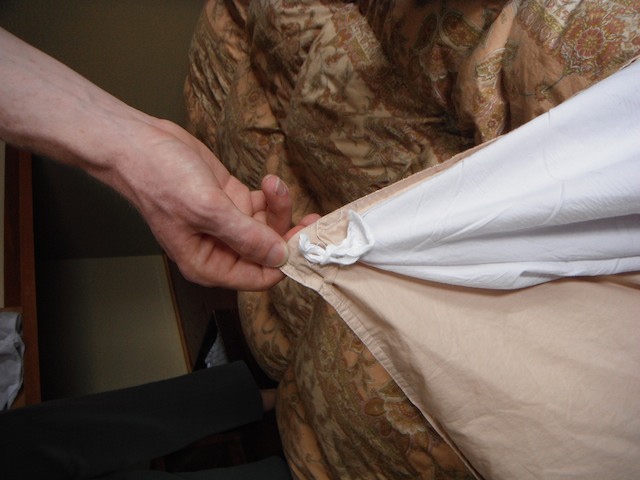
On a sunny Sunday futons hang from apartment building balcony railings to receive their weekly freshening. Sometimes the comforter (kakebuton, かけぶとん, 掛け布団) has fabric loops on each corner and the fitted sheet (shiitsu, シーツ) has ties on the inside at the corners. Tying these together helps keep the sheet in place.
Making Your Own Futon
Sometimes the innkeeper or host lays out the futon for you on your first night. On subsequent nights you prepare your own bedding. Because you never leave your futon spread out during the day, every morning you fold it up properly yourself.
Learning how to lay out and fold up a futon ahead of time gives you confidence when the time comes to do it on your own.
Elements of a Futon
A futon contains these elements:
- mattress (shikibuton, しきぶとん, 敷き布団)
- sheet (shiitsu, シーツ) to cover the shikibuton
- comforter or quilt (kakebuton, かけぶとん, 掛け布団)
- fitted sheet for the kakebuton
- blanket (moufu,もうふ, 毛布) during cooler times only
- You may also be given a thin, fabric-covered mat for a bottom layer.
Laying Out a Futon
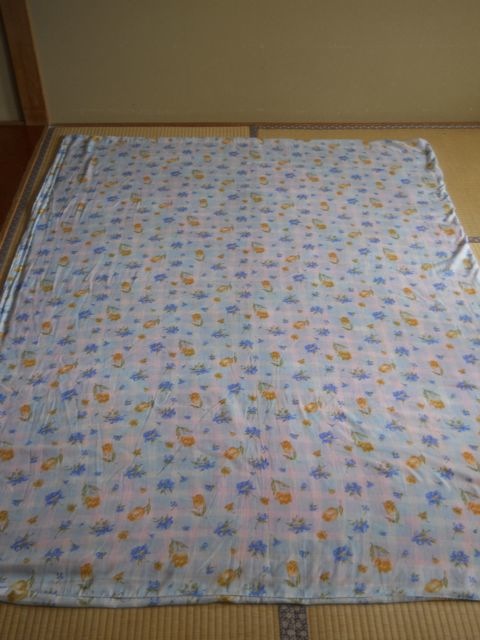
Look at the items provided. If there is a very thin, fabric-covered mat, lay it out on the floor for the first layer.
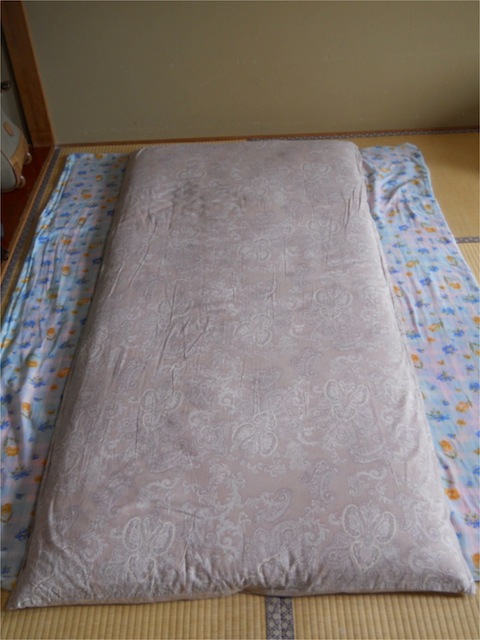
Next lay the oblong mattress (shikibuton) on top of the bottom layer or directly on the tatami.
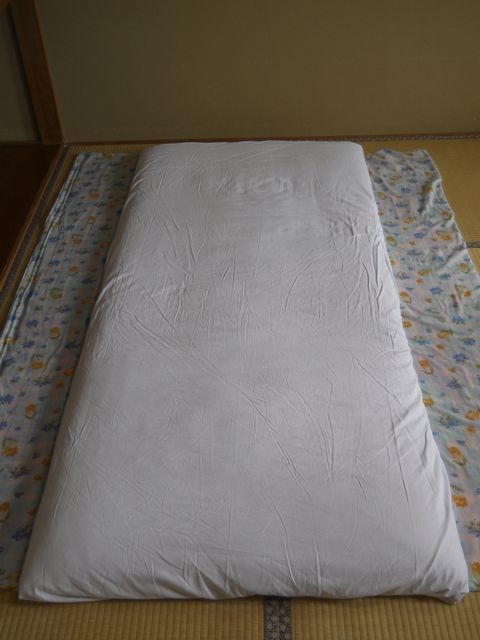
Spread the flat sheet (shiitsu) on top of the shikibuton. Fold the excess underneath for a tight fit.
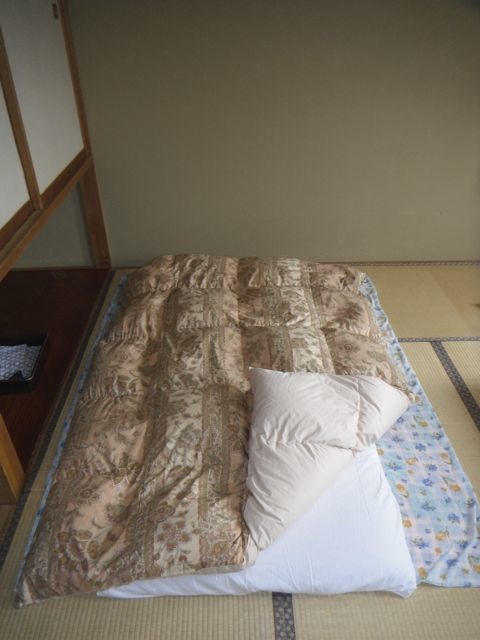
Lay the soft comforter (kakebuton) on top of the sheet-covered shikibuton.
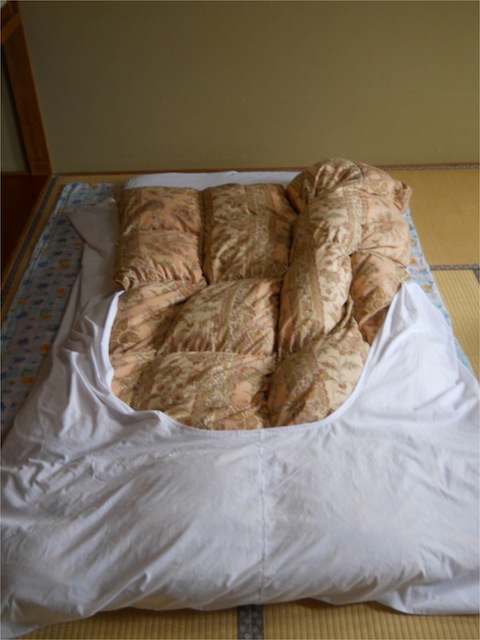
There is a fitted sheet for the kakebuton. Place the kakebuton inside the fitted sheet.
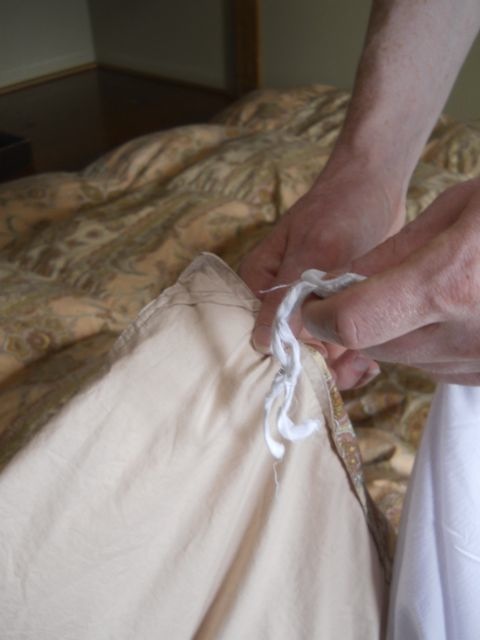
Sometimes the kakebuton has fabric loops on each corner and the fitted sheet has ties on the inside at the corners. Attaching these makes for a snug and secure fit.
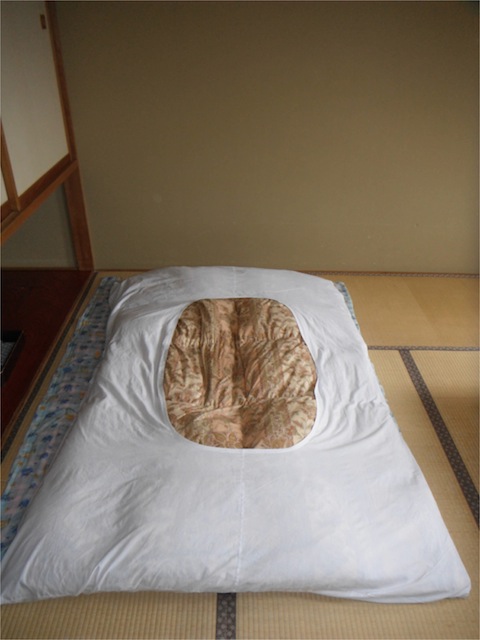
With the fitted sheet wrapped around the kakebuton, turn the solid sheet side downward to face the shikibuton and leave the open oval side facing upward.
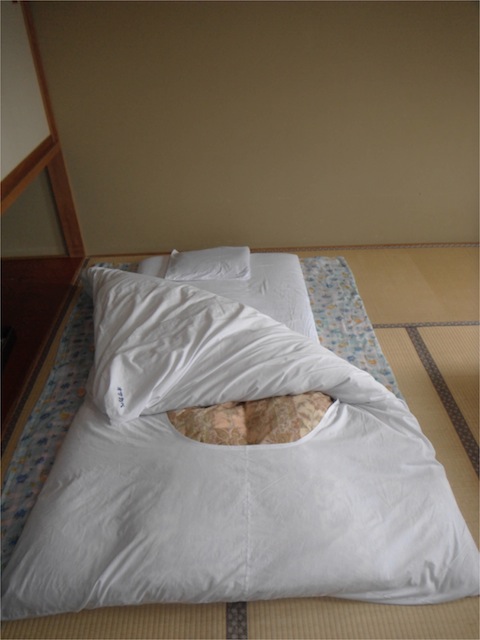
Place your pillow at the head of the futon. Fold back the kakebuton and sleep between the sheets. If it is cool weather, place your blanket (moufu) on top of the kakebuton, or directly on you, if you prefer.
Pillows
Your host provides a Japanese pillow (makura) for your use. These are about half the size of an American bed pillow. They are filled with buckwheat husks, beans or small synthetic beads which allow the pillow to conform to the shape of your head and neck. If you do not want to use a makura, ask your host for a stuffed pillow or put folded clothes or towels in the pillowcase.
Storing the Futon
Each morning fold the futon and store it in the area provided. This could be a closet or cabinet, or the corner of the room. Japanese store their futons for several reasons. If the bedding is left out, it is in the way all day long and limits the usage of the room. Putting it away frees the room for uses other than sleeping. Futons left in place tend to get dirty, collect odors, mold and dust. Also, the tatami floor needs to have air circulation. Futons need to be aired and fluffed frequently. The host takes care of this aspect between guests.
You are expected to store the futon daily. It is considered bad manners to leave your futon out all day on the tatami flooring.
How to Store a Futon
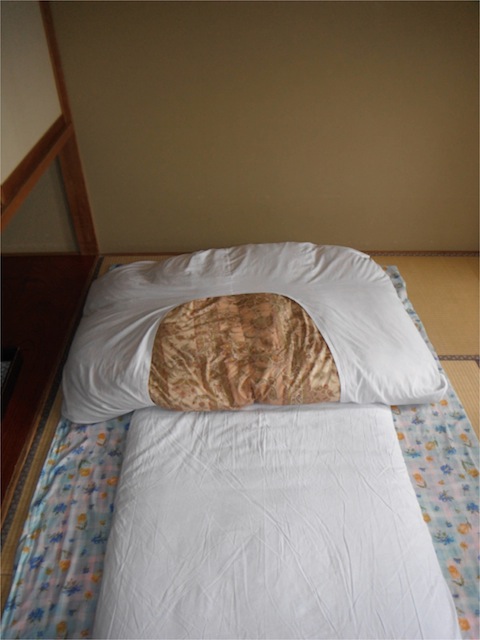
Begin by folding the kakebuton (comforter) in half with the sheet sides against each other to keep their surfaces clean since they are against your skin when you sleep.
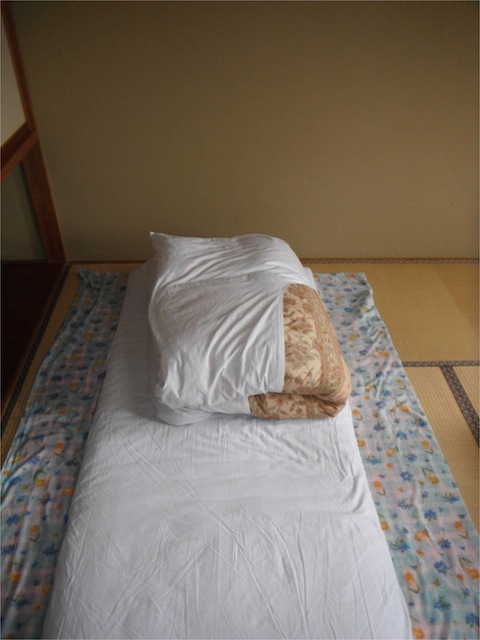
Fold the kakebuton in half again to get it to a size that can be easily stored or stacked.
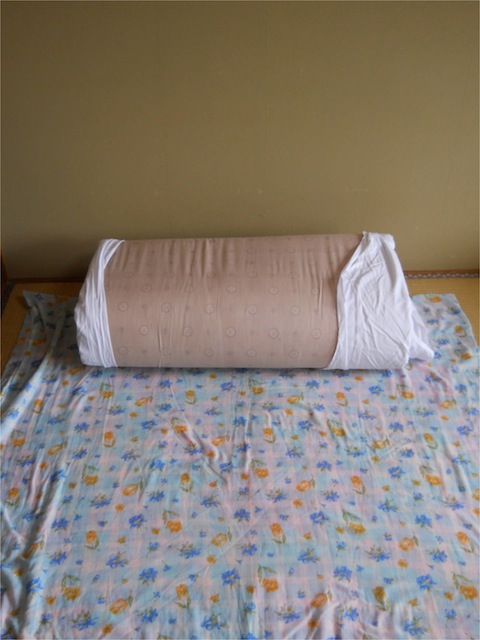
If you leave the sheet on the shikibuton (mattress), fold it in half with the sheet sides against each other for cleanliness. Then fold it in half again. If, you remove the sheet (shiitsu), you can fold the shikibuton in thirds instead.
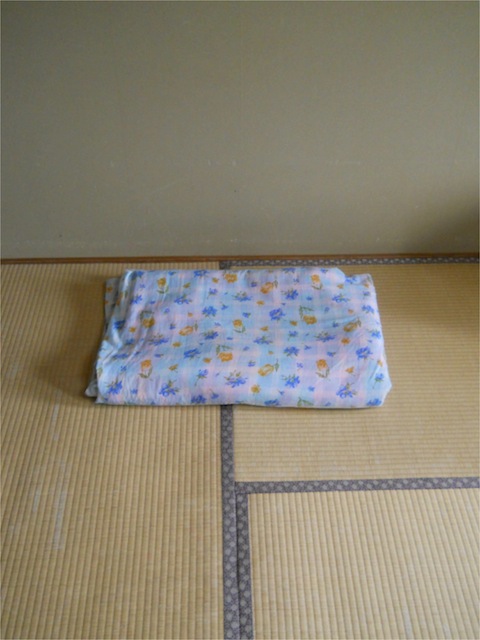
If you have a bottom mat, fold in in halves until it gets to a manageable size.
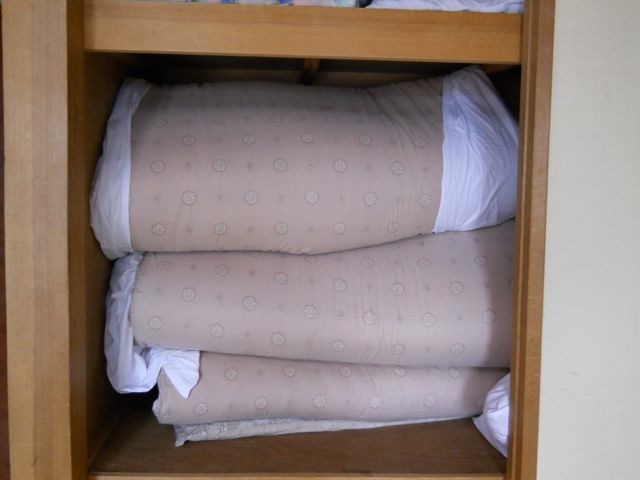
Place the futon bedding components in the cabinet or closet provided.
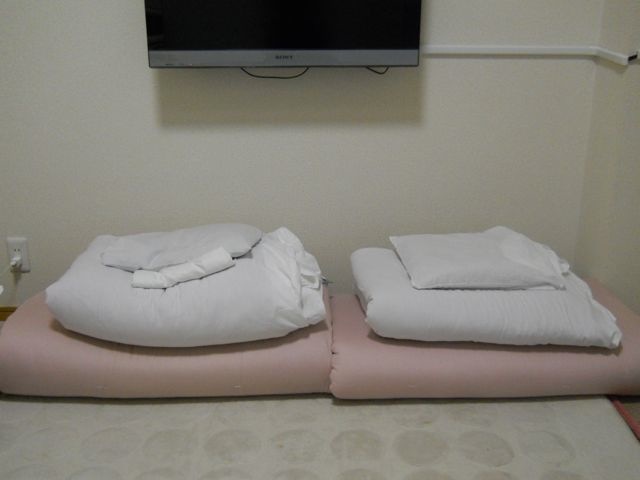
If they are to be stored in the corner or along the wall, stack them in this order: shikibuton (mattress) on bottom, kakebuton (comforter) next, top with folded sheet and makura (pillow).
Comfort of the Futon
Japanese futons are quite different than western-style futons which feature thick mattresses on wood or metal frames that can convert from a bed to seating. Japanese futons can be very comfortable and cozy while providing a good night's rest. Even if you do not choose to use Japanese bedding every night during your visit, a trip to Japan is incomplete without at least sampling the traditional Japanese way of sleeping. Oyasumi nasai (sleep well!, おやすみなさい!, お休みなさい!)